GENERAL BREWERIANA
GALLERY 1
please allow the pictures to be loaded before scrolling the page
MATS or COASTERS

East German
commemorative mat

rare Italian mat
from the early '60s |
Beermats were first produced in Germany at the end of the 19th century; originally
made of pressed paper, they were thicker than the present ones (about 5 mm., or ¼ of an inch)
and had a very simple decoration on one side, while now they often have colourful print on both
front and back.
They are extensively used in central Europe and Britain, but in many other countries they are an
unusual beer item, or they are not used at all.
British mats are the ones with the most fancy colours and shapes, while German
mats are famous for the great variety of sets, some of which made of a very large number of
different subjects; also specimens from Belgium, the Netherlands and Switzerland are quite nice.
Mats are common in east Europe countries too; up to a few years ago they were not very sophisticated,
with few colours, although their graphic simplicity was rather interesting all the same; now these mats look exactly
like western ones.
This form of collection is known as tegestology from teges, the latin word for 'mat'.
|

West German mat,
from a pictorial set
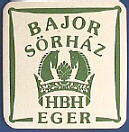
Hungarian mat
from the late '80s |
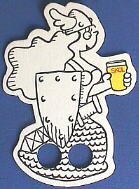
British mats:
bright colours
and cool shapes |
| 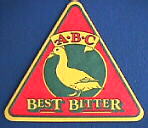
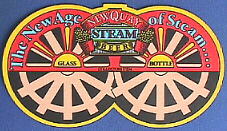 |
|

south-east Asian
beers have mats too
|

Mexican specimen,
in soft rubber
|
CAPS

a specimen from
French Antilles
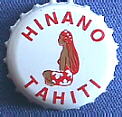
a specimen from
French Polynesia |
Known in different languages as "crown caps" because of their typical zig-zag rim, they are
another rather popular beer collectable, easily found all over the world.
Most of them are decorated, or bear the brewer's name, although a few have only
a blank surface.
In some cases, the lower part too might have some decoration, like the ones in collectors'
series, or for special offers.
In opening bottles, some collectors place a coin over the cap, so to prevent it from bending.

a specimen from
Slovenia |

Italian cap with decorations
on the lower surface, for a special offer |
|

a specimen from
Germany
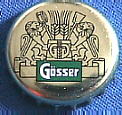
a specimen from
Austria |
BAR TOWELS

a British specimen |
Typical British features, used in pubs where they prevent
the wooden bar from being soaked by beer spillings.
A few of them come from other countries too, but only English beers have a big variety
of brands, colours and labels. Some of them are made for other drinks, especially
whisky. |
Rectangular in shape, with a more or less standard size, their patterns are usually
woven, so that after frequent washings colours do not fade away; a few non-British ones,
though, have a printed label.
A special variety are the Australian runners, which can be as long as 3 times the
normal towels, covering the bar for most of its length. |
British towel for an Aussie lager
 |

British towel for an Irish ale |
Since a few years they have become a very popular breweriana item all over the world,
especially among youngsters, but serious collectors too exist: take a look at the WEBPAGE of the present record holder, Alan Alcott (UK) (e-mail address: bartowels@aalcott.freeserve.co.uk). |
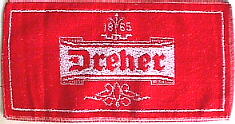
unusual specimen from Italy |

Australian whisky runner
(by courtesy of Alan Alcott)
FROTH REMOVERS
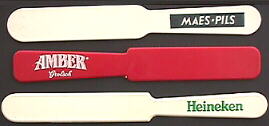
|
These plastic spatulas are sometimes used in European bars (especially in
Belgium and the Netherlands) for removing the excess of froth from glasses filled with beer.
The brewery's label is usually printed on the handle.
|
TIES
 |
Ties are often sold in brewery shops (i.e. shops located
by breweries or by brewery museums, selling promotional objects and gadgets).
They look just as ordinary ties, and have fashionable colours, but a close look reveals that
their pattern is either a beer label or a brewer's mark.
Worthington (British) and Heineken (Dutch) tie patterns
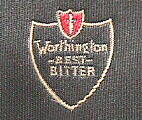 
|
POSTCARDS
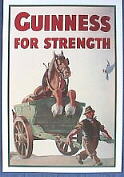
English card |
Postcards may be related to beer and breweries in several ways: they can
show old beer posters, or they sometimes picture a famous brewery, or they might even show
beer collectables, etc.
Most of them are modern, but pretty old ones exist.
Anyway, they make a perfect card to send to a beer fancier, either collector or not. |

German card |
 |
two Czech specimens |
 |
back to the Beer Index
Beer Index